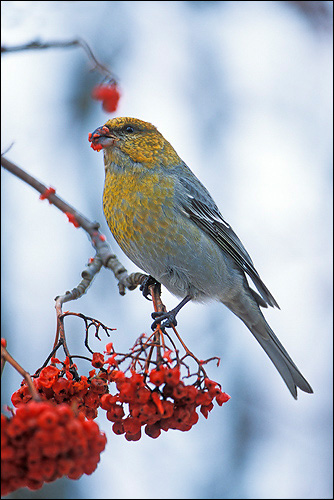Pine Grosbeak (Pinicola enucleator)
The Northern taiga belt is the home of this hardy species, although it is unaccountably thinly distributed and seems to be extremely picky about exactly the conditions it needs – in Lapland, for example, it seems to thrive in the presence of juniper scrub below coniferous trees. Its fussiness, like that of an overindulged pop star, is all the more surprising because it makes excellent use of a wide range of foods during the year. In winter it usually feeds on berries in trees; in spring and summer it feeds on buds and berries from the understorey. And at various other times it will nourish itself upon a variety of seeds, shoots and flowers.
The Pine Grosbeak often remains at high latitudes in winter, protected by its unusual fluffy plumage. However, if the crop of rowan berries is poor in Russia, birds may erupt from these high latitudes and be found in large numbers further south than they usually go.

